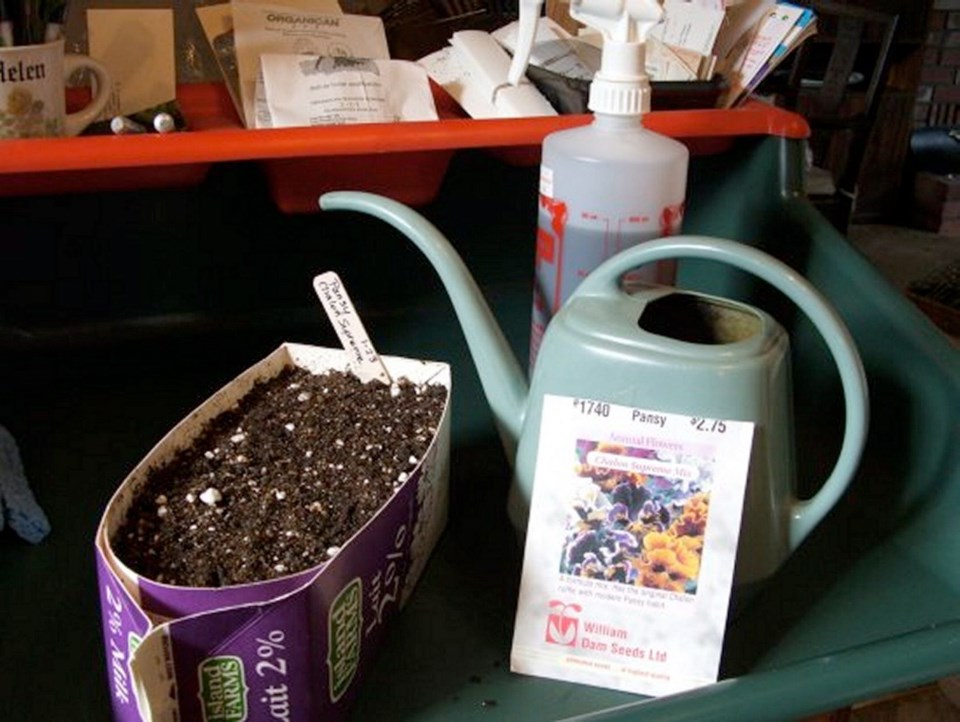Dear Helen: Is it too late to start onions, leeks and early cabbage indoors?
L.S.
It’s not too late. Because of the freezing weather through February, I delayed my usual indoor sowing schedule by around a month. One reason: I keep my home on the decidedly cool side in winter, and most seeds germinate best in warm temperatures. When the weather is really cold, I’ve learned to wait until temperatures outdoors make it easier (and less costly) to keep at least the germinating area (on my dining room table) reasonably warm.
The second reason: There is no point at all in seeding early if weather conditions are not likely to allow for early transplanting. Transplants kept too long in their pots and flats become root-bound, overgrown and straggly. Plants in these stressed conditions will rarely thrive and produce as well as younger transplants that have been sown later.
Dear Helen: Can you give me a fairly precise timing for moving an amaryllis plant outdoors for the summer? I don’t want to put my carefully nurtured plant at any risk.
A.P.
To keep the plant as safe as possible, wait until early July to set the plant outdoors. This is to protect it from the narcissus bulb fly, which is attracted to amaryllis and some other bulbs as well as to daffodils and narcissus.
The flies lay eggs in the soil by the bulbs. Grubs that emerge from the eggs burrow into the bulb bases and feed in their interiors, ruining them. The flies are active in May and June.
Dear Helen: How do I keep seedlings from becoming lanky and weak? What sort of indoor seeding method have you found most successful?
T.R.
As soon as seeds germinate, move the flats or pots into cool room temperatures and bright light. Keep the planting mix a little on the dry side, and make sure the seedlings have the space they need to spread. Warmth, inadequate light, over-watering and lack of space all contribute to seedlings developing long, weak stems and failing to bush out nicely.
Avid home gardeners all have their preferred ways of seeding indoors. Some of my keen gardening friends use what I think of as a time-consuming, labour-intensive “two-step” method, the one I learned from professional growers when I was starting out: Sow into a sterile seeding mix and transplant the young seedlings into flats or pots with enough room and a more substantial planting mix for growing the seedlings into transplant size.
This is the traditional method, used by commercial growers who need to get a saleable plant out of every seed that germinates. The needs of most home gardeners are different. We commonly grow limited numbers of a diversity of plants, and many of us do not have time for the “two-step,” which I followed for only a couple of years before moving to a “one-step” method of growing from seed to transplant in one container.
I seed sparingly into containers nine centimetres deep, filled with a commercial planting mix beefed up with about a third as much purchased, sterilized, all-purpose soil. I usually add small amounts of vermiculite and perlite. My current preferences are Pro-Mix BX and Island’s Finest all-purpose “Premium Sterilized” potting soil.
I seed mainly into two-litre milk and juice containers with a side cut out, except for peppers, tomatoes, cucumber and squash, which I seed into individual pots 10-cm wide and eight- or nine-cm-deep, set on plant trays. I move the peppers and tomatoes into deeper, slightly wider pots as they develop, for fairly large transplants with extensive root systems to set out into the garden.
GARDEN EVENTS
Native plant meeting. The Native Plant Study Group will meet on Thursday at 7 p.m. in Room D 228 of UVic’s MacLaurin building. James Miskelly, who has worked in ecology and ecosystem conservation for 20 years, will speak about Rare Plants and Hidden Diversity. Non-member drop-in by donation. Students free. Parking cost $3. npsg.ca.
Chrysanthemum meeting. The Victoria Chrysanthemum Society will meet on Saturday at 2 p.m. at 1647 Chandler Ave. The afternoon will feature a question and answer session on the care and feeding or your plants.
Seedy in Campbell River. Campbell River’s Seedy Saturday in the community centre, 9 a.m. to 12 p.m. will include a home-gardener seed swap, sales of seeds and plants, and a “Li’l Sprouts” corner for children.



